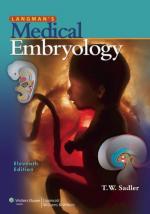|
This section contains 376 words (approx. 2 pages at 300 words per page) |
Embryology is the biological field of study that examines the early development of organisms. In general, a developing organism is considered an embryo until the point at which all the essential tissues and organ systems have developed. In humans, the embryonic stage covers approximately the first two months of pregnancy.
Certain key events occur during the embryonic development of all multicellular animals. These include fertilization, the union of the sperm and egg to form the fertilized egg, or zygote ; cleavage, when the fertilized egg divides in organized cycles to produce multicellularity; gastrulation, in which the three primary germ layers, the ectoderm, mesoderm, and endoderm, are differentiated; and finally organogenesis, during which the organs develop.
Two general approaches are often taken in the study of embryology: These are descriptive embryology and experimental embryology. Descriptive embryology dates from antiquity, and attempts to describe the normal sequence of developmental events that occur during embryonic development in a given organism. This information can be used to explain how adult anatomy is achieved. Understanding normal development also allows scientists to understand the origin of common birth defects.
Experimental embryology attempts to shed light on the basic processes involved in development, particularly at the cellular level. Experimental embryologists want to discover how development is controlled and how ever more complex structures and organs are produced. They tend to focus on one of a few model organisms about which considerable developmental and genetic information is already known. These model organisms include the mouse, the chicken, the fruit fly Drosophila melanogaster, the African clawed frog Xenopus laevis, and the nematode Caenorhabditis elegans. One particularly effective approach in experimental embryology has been that of developmental genetics, which studies the effect of mutant genes on developmental processes. By comparing the developmental results of mutant versus normal genes, the role of individual genes in development can be assessed. This experimental strategy usually involves screening large numbers of animals for developmental abnormalities.
 Scientists interested in embryology study images such as this close-up of a 17.5 day old rat embryo without its yolk sac.
Scientists interested in embryology study images such as this close-up of a 17.5 day old rat embryo without its yolk sac.
See Also
Bibliography
Gilbert, Scott F. Developmental Biology, 5th ed. Sunderland, MA: Sinauer Associates, 1997.
Gould, James L., William T. Keeton, and Carol Grant Gould. Biological Science, 6th ed. New York: W. W. Norton & Co., 1996.
|
This section contains 376 words (approx. 2 pages at 300 words per page) |


